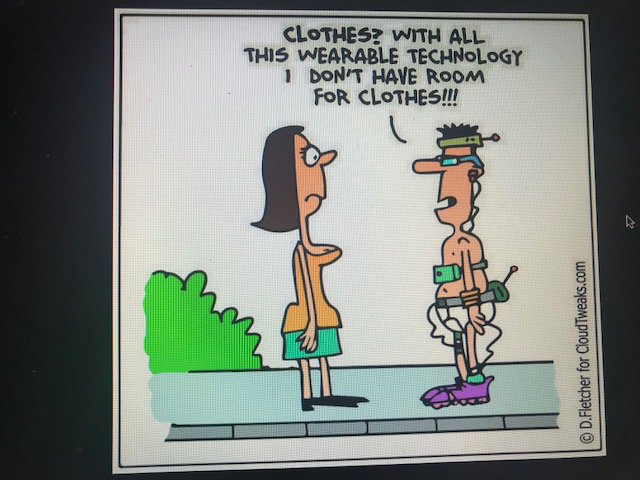
14 May How Digitally Prepared is the Workforce- Part II
Health literacy, digital literacy, digital health literacy, physical activity literacy, nutrition literacy… argh there is so much to think about, no wonder some of our whānau are confused!
In designing digital tools and resources for Māori public health, it is important for us to understand the definitions and context of health literacy, digital literacy and digital health literacy and how that influences individuals/whānau.
Literacy and numeracy is important for whānau to be able to participate fully in society, it is a key determinant in whānau health and wellbeing (Hutchings, J, Ikin, K 2016)
The relationship between socio-economic status and participation in the digital economy is supported by a range of researchers/research papers, who identify those on low incomes, people with few educational qualifications or low literacy levels, unemployed, those with disabilities, sole parents, elderly people and those in isolated areas have lower levels of digital participation. It is now recognised that the benefits of the digital world can only be realised if all four dimensions of digital inclusion are addressed – access, motivation, skills and trust.
Health Literacy
In order to understand health literacy from a digital context, it’s important to first consider what health literacy is. This definition of Health Literacy is provided by Kickbusch et al in the report Korero Marama.
Health Literacy is the degree to which individuals have the capacity to obtain, process and understand basic health information and services needed to make appropriate health decisions. (Kickbusch et al 2005 in He Korero Marama pg 3)
Digital Literacy
Digital literacy (or to be digitally literate) are the skills required to achieve digital competence, the confident and critical use of ICT – (Information Communication Technology) for work, leisure, learning and communication. Digital Literacy is underpinned by basic skills in ICT.
These basic skills include the use of computers to retrieve, assess, store, produce, present and exchange information, and to communicate and participate in collaborative networks via the Internet (DG Information Society and Media Group, 2008,Hilding-Hamann, 2009)
Digital Health Literacy
The World Health Organisation defines digital health literacy (dhl) as the ability to seek, find, understand, and appraise health information from electronic sources and apply the knowledge gained to addressing or solving a health problem. A range of factors influence an individual/whānau’s dhl. These include educational background, age, digital literacy skills, health status and motivation for seeking information. http://www.who.int/global-coordination-mechanism/working-groups/digital_hl.pdf
Physical Activity Literacy
Sport New Zealand refers to a definition of Physical literacy as;
“the motivation, confidence, physical competence, knowledge and understanding required by participants that allows them to value and take responsibility for engaging in physical activity and sport for life” (Taken from Sport NZ website as defined by Margaret Whitehead, 2013)
Based on Kickbusch’s definition above, Nutrition Literacy is then the degree to which individuals have the capacity to obtain, process and understand nutrition information and skills needed to make appropriate nutrition decisions.
In a recent group activity with tauira on the Māori Public Health Leaders course, the range of digital media, tools and devices currently being used in the Māori Public Health/Whanau Ora field is HUGE. Some tauira knew of a number of the tools, others less. Some are only known to a particular field/health kaupapa, and others were unable to use some of the tools due to their unavailability within their workplace. For some, it was an issue around their broadband connection.
Technology in the wider Health Sector
The wider primary, secondary and tertiary health sector with its focus on the individual patient clinical care, continues to benefit from the evolving health tech industry within the sector. Recent innovations which have enabled early/better diagnosis and treatment include; digital scanners, ultrasound, 3D printing, robotics, smartphones, tablets, scanners, big data, tele tools, staff management, research data, AI customer service/patient kiosks, technology within operating rooms, disease detection technology, personal health records, virtual health teams. For those with diabetes, apps help to monitor blood glucose levels, and communicate health information back to Health Professionals. More recently important social-psychological tools are being designed, such as Harpo, a therapeutic robotic baby seal being utilised to calm older patients with dementia. http://www.parorobots.com/
Emerging Digital Technology in Health Promotion
Toi Tangata provides health promotion activities for the Ministry of Health, and as such has observed the current use of EDT within our sector. Recent uses of EDT in Health Promotion include the use of digital technology as an intervention medium, for behaviour change, as a research instrument and focus, and for professional development. (Health Promotion Forum 2014) The use of technology as a communication channel is another key role although one might argue that it is a tool (rather than a role) to support behaviour change.
Current EDT channels currently in use within health promotion in New Zealand include those with a strong communication and information focus; Social media – facebook, web – based health sites, blogs, e-newsletters, zoom meetings, m-health tools, (Including text messages) Apps, QR codes, I-Books webinars, twitter, handheld devices and web-based online games. Other tools include telehealth, software development, and computer kiosks. It is anticipated that the use of Augmented Reality, Big data, AI- machine learning including chatbots) will also grow as they become more accessible (and relevant) to the sector.
Devices which show favour in a booming wellness industry to improve nutrition and physical activity amongst individuals, include a range of fitness and nutrition Apps, wrist devices and more recently wearable clothing that monitors heart beat, steps taken and energy used. Also the recent MHealth tool Toi Tangata was involved with developing and testing Ola Ora.
When the workshop was finished last week with the tauira on the Maori Public Health Leaders wananga, I left them contemplating the future of nutrition with this clip from Miami University;
Is this the future of nutrition? Project Nourished
No reira Mauri Ora kia koutou katoa!
References
Hutchings, J. Ikin, K. Haea Te Pū Ata. A National Strategy for Māori Adult Literacy and Numeracy 2016-2020 Te Wahanga, NZCER, Wellington pg 4
Ministry of Health. 2010. Ko¯rero Ma¯rama: Health Literacy and Ma¯ori Results from the 2006 Adult Literacy and Life Skills Survey. Wellington: Ministry of Health pg 3
https://www.health.govt.nz/system/files/documents/publications/korero-marama.pdf
DG Information Society and Media Group, 2008, p. 4; Hilding-Hamann, 2009), reported in Bunker, 2010:14



